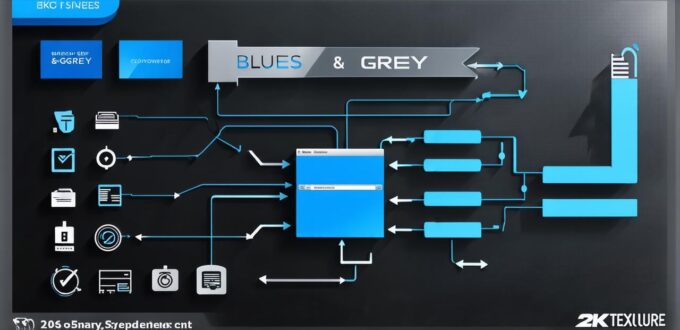What Are Software Components?
Software components are the basic building blocks of any application or software system. They can be categorized into several types, including:
- Libraries: A library is a collection of pre-written code that provides functionality to an application or software system. Examples of libraries include OpenCV for computer vision and jQuery for web development.
- Frameworks: A framework is a set of tools and libraries that provide a structure for developing applications. Examples of frameworks include React for web development and Flutter for cross-platform mobile app development.
- Modules: A module is a self-contained unit of code that provides a specific functionality to an application or software system. Modules can be imported and used within other parts of the system.
- Services: A service is a component that provides functionality to other components within a system. Services are often used for data access, authentication, and authorization.
Why Are Software Components Important?
Software components are important for several reasons:
- Reusability: Software components can be reused in different parts of an application or software system, which saves time and effort. For example, a module that performs data validation can be used across multiple parts of a system, rather than writing the same code multiple times.
- Scalability: Software components can be scaled up or down as needed, which allows for flexibility in system design. For example, adding more instances of a service component can improve performance during high traffic periods.
- Maintainability: Software components are easier to maintain and update than monolithic systems. Changes made to one component will not affect the entire system, which reduces the risk of introducing bugs or breaking functionality.
- Collaboration: Software components provide a modular approach to software development, which makes it easier for developers to collaborate on projects. Components can be assigned to different team members, and each component can be developed independently.

Case Study: Uber’s Microservices Architecture
Uber is a great example of a company that uses microservices architecture to build their software system. Microservices are a type of software architecture that involves breaking down an application into smaller, independent services. These services communicate with each other through APIs and can be deployed and scaled independently.
Uber’s microservices architecture allows them to make changes to specific parts of their system without affecting the entire system. For example, if Uber needs to change their payment processing system, they can update the payment processing service without affecting the ride-hailing service. This modular approach also allows for faster development and deployment, which has helped Uber stay ahead of the competition.
Personal Experience: Building a Web Application with React
I recently built a web application using React, a popular JavaScript library for building user interfaces. React provides a set of tools and components that made it easy to build the application. I was able to reuse existing components from other projects, which saved me time and effort. I also used a service component for authentication and authorization, which allowed me to focus on developing the application’s core functionality.
Research: The Impact of Software Components on System Performance
According to a study by Intel, software components have a significant impact on system performance. The study found that using microservices architecture can improve system performance by reducing latency and improving scalability. Another study by Google found that using libraries and frameworks can improve system performance by reducing the amount of code that needs to be written.
